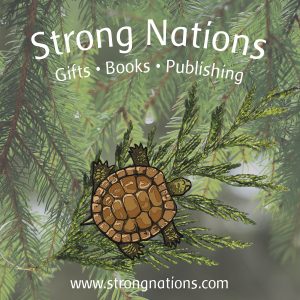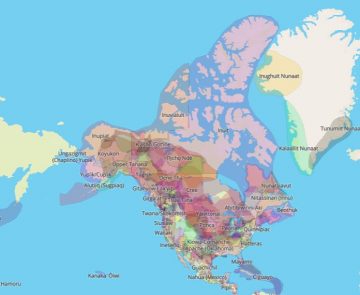The Truth and Reconciliation Commission Calls to action and the BC curriculum requires teachers to consider and incorporate Indigenous voice, issues, resources and perspectives in their teaching. Teachers in BC are also reminded that the 9th Professional Standard (link to BCTC Resource with full text) requires educators to authentically engage in decolonizing their practices. The video, Professional Standard 9 – Truth and Reconciliation, Moving Forward Together offers a moving call to action.
Educators respect and value the history of First Nations, Inuit and Métis in Canada and the impact of the past on the present and the future. Educators contribute towards truth, reconciliation and healing. Educators foster a deeper understanding of ways of knowing and being, histories and cultures of First Nations, Inuit and Métis.
The aftermath of the Summer 2020 anti-racism protests sparked an international conversation on the urgency of racial justice for Black, Indigenous and People of Colour, a conversation that continues today. As we reflect on how to be anti-racist and how to decolonize our societies, we must discuss the importance of education in achieving this. I believe that highlighting the histories and cultures of marginalized groups in the education system is essential to creating a truly anti-racist society. Finding resources to begin incorporating these ideas into classrooms can be daunting for many.
This post attempts to highlight a handful of Indigenous education-related resources that can help guide teachers in creating anti-racist lessons and activities that highlight the importance of reconciliation with Indigenous peoples. It is important to seek authentic, local resources and avoid ‘pan-Indigenous’ perspectives.
Resource Collections:
Curriculum Bundles have been assembled by Indigenous educators from around British Columbia, most of whom are students and graduates of the NITEP program. Each bundle focuses on a particular skill, resource, or place, and connects with BC curriculum.
The UBC based website, https://indigenizinglearning.educ.ubc.ca/ includes well-curated resource links and information about ‘welcomes’ and ‘land acknowledgements’.
Indigenous educators are creating and openly sharing their resource collections:
- Carolyn Roberts, member of the Squamish Nation, UBC BEd 2014, MEd 2018 shares her work and amplifies some valuable resources via her website Restorying Education.
- Nadine McSpadden, a member of the Secwepémc Nation and educator, now retired from teaching and working with a consulting firm, has been sharing via LinkedIn and her a Weebly Website: https://nadinemcspadden.weebly.com/. Look for some shared resources under ‘more…’ including teaching beading, natural dyes and incorporating literature in Math. You might also enjoy the resources she shares under “Coffee and Conversations” as you consider building connections and creating safe spaces in your classroom.
- Langley School District has a FPPL ‘elaborations’ document that provides suggestions on how teachers can incorporate Indigenous perspectives and the First People’s Principles.
Subject Specific Resources
At a glance documents representing implicit and explicit connections to each grade level and subject area are part of the Indigenous Education Resources shared by the BC Ministry of Education. On their main Indigenous Ed resource page, you’ll also find videos and a Resource Inventory to help teachers incorporate First Peoples Knowledge and Perspectives.
- FNESC has a fairly comprehensive PDF to assist teachers looking to incorporate Indigenous Science in their courses. The Science First Peoples: Secondary resource has a variety of suggestions across the secondary sciences.
- A post in this blog, Whose Names are These? about incorporating Indigenous resources as part of species ID or animal classification in Biology.
- Knowing Home, Braiding Indigenous and Western Science is an open educational text created by Gloria Snively and Wanosts’a7 Lorna Williams and shared by the Victoria School District’s Indigenous Education team.
English First Peoples
- The FNESC Planning for Instruction, Grades 10-12 document (2018) is meant for English teachers (specifically for the course English First Peoples, but with some great ideas for any English teacher)
Physical Health Education
- The BC Ministry of Ed has created a document to support incorporating FPPL in planning for PHE k-12. This document makes it quite clear that incorporating Indigenous knowledge and perspectives is implicit in the PHE curriculum across all grade levels (while also being explicit in PHE Outdoor Ed at the senior secondary level)
Cultural Maps:
Native Land is a website that maps out the ancestral lands of Indigenous peoples from
around the world. The main feature of the website is an interactive map that can filter the lands by linguistic groups, territories, and treaties. Another local BC website, The First People’s Map of BC, shares Indigenous language, art and heritage in an interactive format perfect for students seeking to learn more about local language and culture or connect with artists. You can even hear audio clips of native language speakers.
The Indigenous Ed team in SD61, Victoria shares a variety of maps in their Social Studies Resource area for Secondary teachers.
FNESC:
The First Nations Education Steering Committee, or FNESC, is an organization that advocates for the inclusion of Indigenous history and cultures into the curriculum as well as the well-being of Indigenous students in British Columbia. They offer a plethora of resources for teachers to make use of in classrooms, including lesson-planning documents across subject areas.
UBC Booklists:
The UBC Education Library booklistsare available for educators and teacher candidates, offering an abundance of resources ranging from picture books to use in the classroom to lesson-planning guides. The library offers multiple booklists regarding Indigenous culture and history. These booklists cover topics such as residential schools, storytelling resources and literature written by Indigenous authors.
Puppets at Xwi7xwa:
In addition to their vast textual resources, the Xwi7xwa Library at UBC has a number of collections of puppets created by Indigenous artists to help engage students using storytelling. There are a variety of collections that can be borrowed from the library, including the “Grace the Eagle“, “Splash the Orca” and “Streamer the Salmon” collections.
Digital Stories:
Indigenous Storybooks is a repository of free openly licensed online stories written by Indigenous peoples in Canada. Inspired by, and utilizing, the open-licensed stories from Little Cree Books, this project aims to make the text, images, and audio of stories available in Indigenous languages as well as English, French, and some of the most widely spoken immigrant and refugee languages of Canada.
Witness Blanket is a unique and striking digital collection. This large-scale work of art carries items and stories, accompanied by the voices of residential school survivors. The site also houses a Teacher’s guide that helps teachers build empathy with their students and develop a human rights culture in their classroom.
Strong Nations:

Strong Nations
Strong Nations is an online store and publishing house that sells authentic Indigenous-created art and literature. They are a BC-based organization, however they offer resources from Indigenous groups from all over Canada. One interesting resource that I found on Strong Nations is the “This Land is our Storybook” series, which is a series written from the perspective of Indigenous children living in the Northwest Territories.
As we navigate conversations surrounding anti-racism and reconciliation, we must continue this discussion in teacher education and in the education system more broadly. You may wish to visit SFU’s “Think before you Appropriate” resource as you explore and learn. I hope you will explore the resources in this post so that you can begin this work in your own classroom.
Guest post by Naomi Hudson, Scarfe Sandbox Project Assistant and Virtual Peer Mentor, Winter 2020; edited by Yvonne Dawydiak, Winter 2022, Fall 2023.


